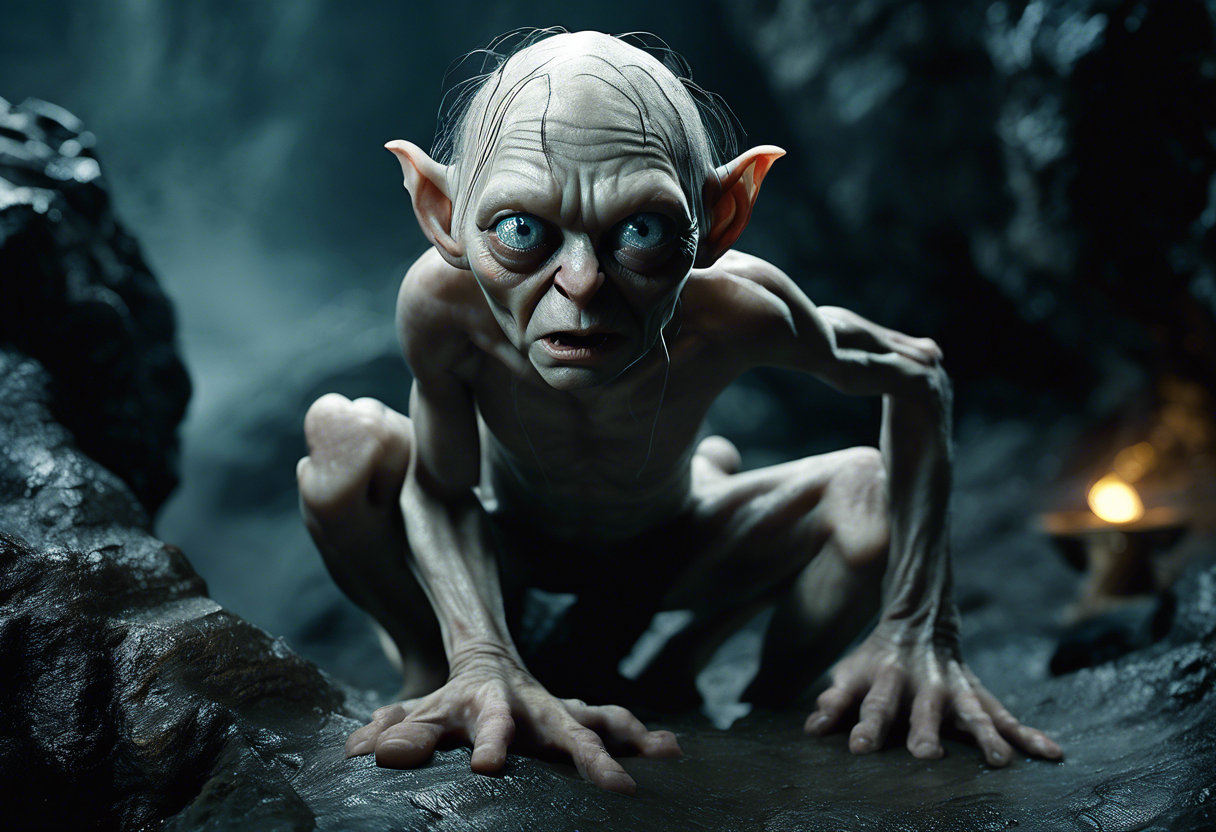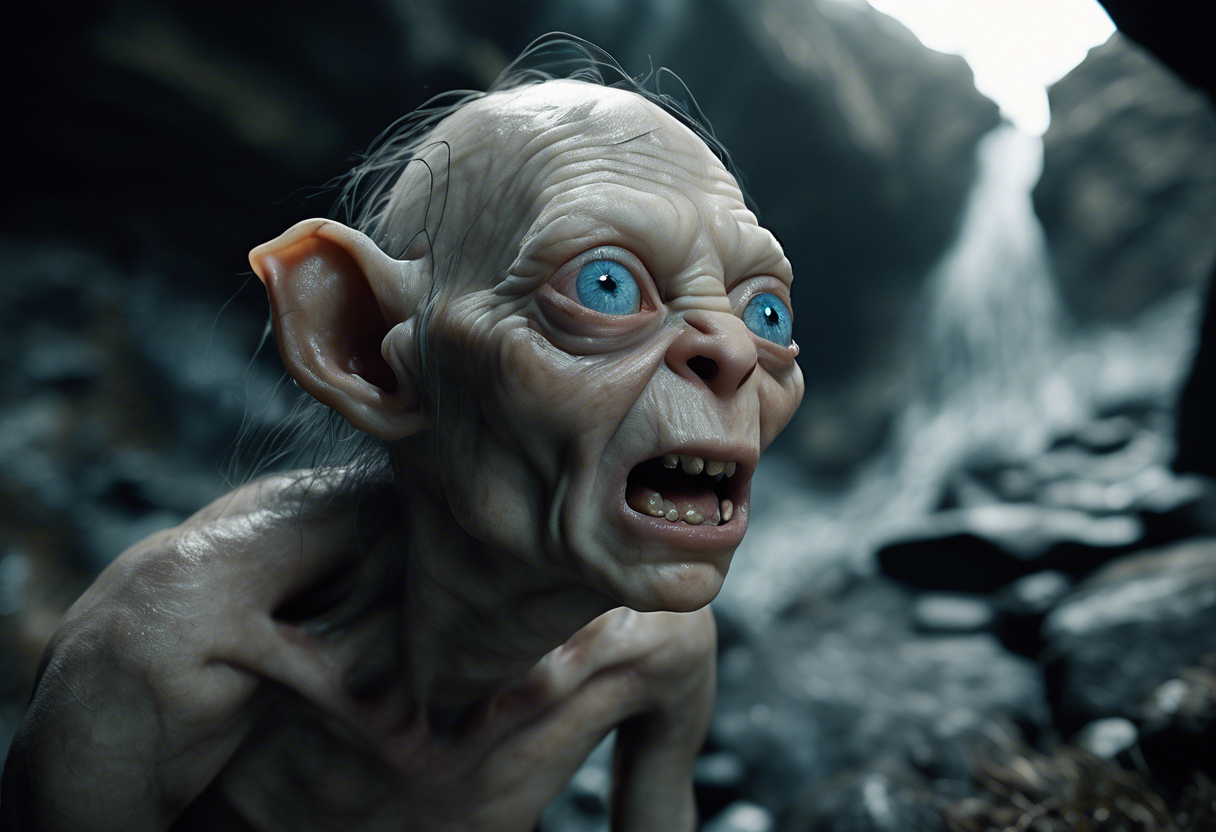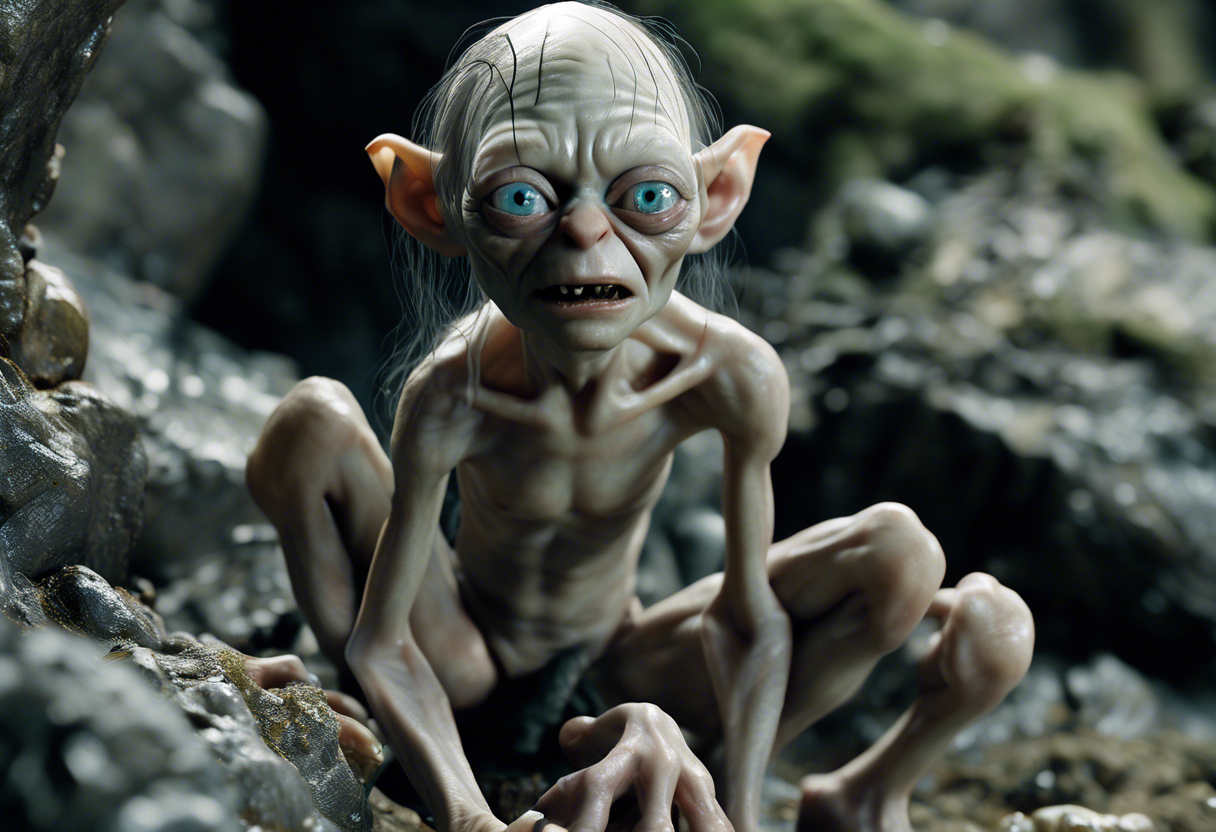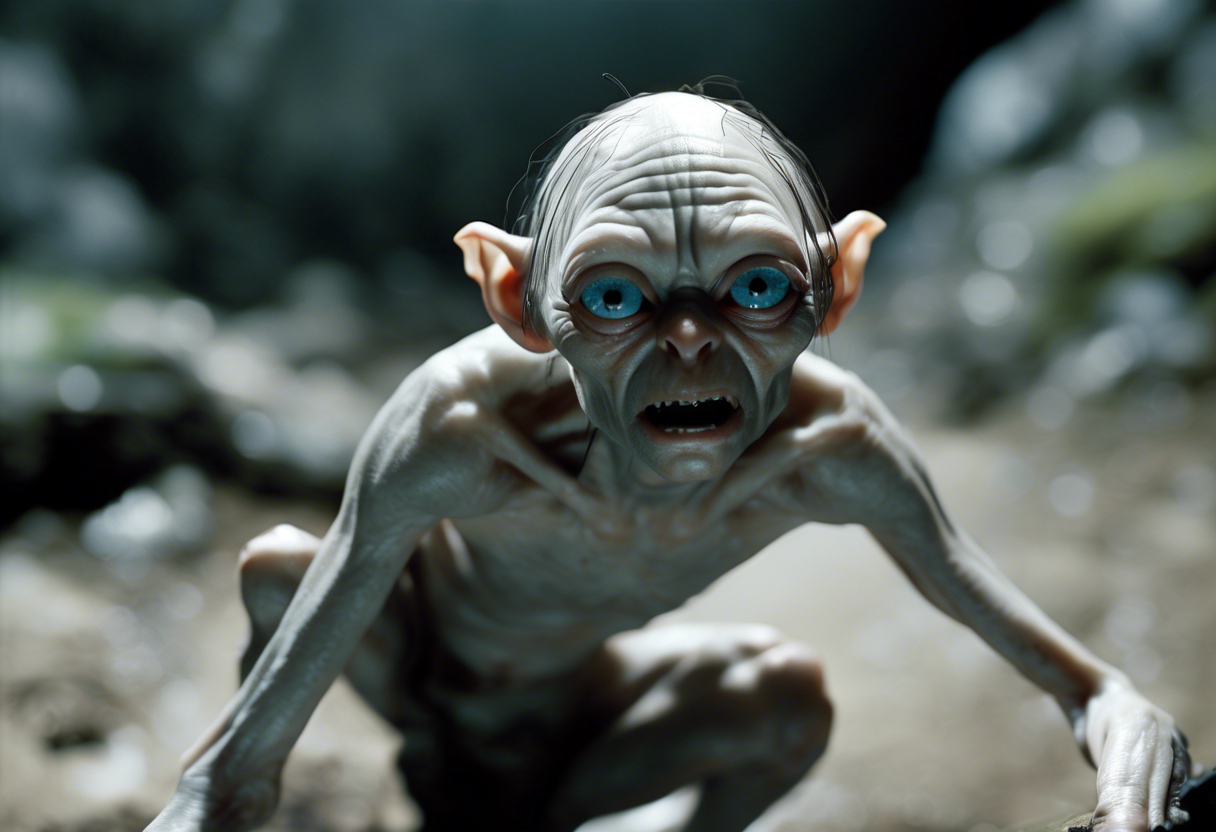Contents
Gollum: The Complex and Tragic Figure of The Lord of the Rings
Introduction
Gollum, one of the most iconic and complex characters in J.R.R. Tolkien’s The Lord of the Rings, is a figure of profound depth and tragedy. Originally known as Sméagol, Gollum was a Stoor Hobbit of the River-folk who lived near the Gladden Fields [5].
Created by Tolkien, Gollum’s backstory is deeply intertwined with the history of the One Ring. Sméagol’s life took a drastic turn when he discovered the Ring in the course of his fishing, an event that occurred over 400 years before the events of The Lord of the Rings. The Ring’s influence gradually corrupted Sméagol, transforming him into the creature known as Gollum [5].
Gollum’s defining traits include his obsessive desire for the Ring, which he refers to as "my Precious," and his dual personality. This duality is evident in his internal debates between the sinister "Stinker" and the submissive "Slinker" aspects of his personality [5].
Within the narrative of The Lord of the Rings, Gollum plays a pivotal role as both a guide and an antagonist to Frodo Baggins, the Ring’s bearer. His complex nature and conflicted loyalties make him a compelling and tragic figure, highlighting the destructive power of the Ring and the struggle between good and evil.
Role in the Story
Gollum’s storyline in The Lord of the Rings is marked by his relentless pursuit of the Ring. After losing the Ring to Bilbo Baggins in the events of The Hobbit, Gollum becomes obsessed with reclaiming it. This obsession leads him to track down Frodo, who has inherited the Ring from Bilbo.
Gollum’s journey intersects with Frodo’s when he is captured by Frodo and Samwise Gamgee in the land of Mordor. Despite his initial hostility, Gollum agrees to guide them through the perilous terrain in exchange for the promise of retrieving the Ring. This uneasy alliance is fraught with tension, as Gollum’s loyalty is constantly torn between his promise to Frodo and his overwhelming desire for the Ring [3].
Key events in Gollum’s storyline include his internal debates, which often result in the nefarious "Stinker" side prevailing over the more benign "Slinker" side. One of the most tragic moments occurs when Gollum briefly repents and shows a glimmer of his former self, Sméagol, but this is short-lived due to Sam’s skepticism [5].
The climax of Gollum’s story occurs at Mount Doom, where his all-consuming desire for the Ring ultimately leads to his downfall. In a final confrontation with Frodo, Gollum bites off Frodo’s finger to obtain the Ring but loses his balance and falls into the lava, taking the Ring with him [4].
Character Analysis
Gollum’s personality is a complex interplay of conflicting desires and loyalties. His dual nature, represented by the "Stinker" and "Slinker" personas, reflects the ongoing struggle between his corrupted and original selves. The "Stinker" side embodies the malevolent influence of the Ring, while the "Slinker" side retains remnants of Sméagol’s innocence and vulnerability [5].
Gollum’s motivations are primarily driven by his obsessive desire for the Ring, which has become the central focus of his existence. This obsession is both a source of strength and a profound weakness, as it blinds him to other considerations and ultimately leads to his destruction.
Despite his treacherous nature, Gollum is a pitiful and sympathetic character. His servility and desire to please, particularly when he is treated kindly by Frodo, highlight the remnants of his original personality. This duality makes Gollum a compelling and relatable character, as audiences can see the tragic transformation from Sméagol to Gollum [1].
Themes and Symbolism
Gollum embodies several key themes in The Lord of the Rings. He serves as a symbol of the corrupting influence of power and the destructive nature of obsession. The Ring’s impact on Gollum illustrates how even a decent person can be transformed into a creature consumed by greed and malice [1].
Gollum also represents the theme of servility versus individual will. His complete servitude to the Ring contrasts with Frodo’s strength of character and individual will, highlighting the qualities necessary for a good Ring-bearer. This contrast underscores the importance of free will and the dangers of succumbing to external influences [1].
Furthermore, Gollum’s character touches on the theme of redemption and the possibility of change. Despite his corruption, there are moments where Sméagol’s original self resurfaces, suggesting that even the most corrupted individuals may retain a spark of goodness. However, these moments are fleeting, and Gollum’s ultimate fate serves as a cautionary tale about the enduring power of the Ring’s influence [5].
Cultural Impact
Gollum has had a significant cultural impact since his introduction in The Lord of the Rings. His portrayal by Andy Serkis in the film adaptations brought the character to life in a way that resonated deeply with audiences. The character’s iconic phrases, such as "My Precious," have become part of popular culture, symbolizing obsessive desire and corruption.
Gollum’s influence extends beyond the Lord of the Rings series. He has been referenced and parodied in numerous works of fiction, from literature to film and television. His complex and tragic character has inspired other authors and creators to explore similar themes of corruption, redemption, and the struggle between good and evil.
Critical Reception
Critics and audiences have widely praised Gollum as one of the most compelling and complex characters in literature and film. Andy Serkis’s performance in the film adaptations was particularly lauded, earning him numerous awards and nominations.
The character’s depth and tragedy have been a subject of extensive analysis. Critics have noted how Gollum’s dual personality and internal conflicts make him a nuanced and relatable character, despite his treacherous actions. The tragic nature of his story, particularly his final moments at Mount Doom, has been highlighted as one of the most poignant aspects of the narrative [4].
However, there have also been controversies and varying interpretations of Gollum’s role. Some critics have argued that Gollum’s character serves as a commentary on mental health, addiction, and the destructive power of obsession. Others have seen him as a symbol of the dangers of unchecked ambition and the corrupting influence of power.
Legacy
Gollum’s enduring appeal lies in his complex and tragic nature. He remains one of the most memorable and compelling characters in fantasy literature and film. His story serves as a powerful cautionary tale about the dangers of obsession and the corrupting influence of power.
In contemporary discussions, Gollum continues to be a relevant figure. His character has inspired numerous works of fiction and has been referenced in various forms of media. The themes he embodies—corruption, redemption, and the struggle between good and evil—remain universally relevant.
Gollum’s legacy extends beyond his role in The Lord of the Rings. He has become an archetype for characters torn between conflicting desires and loyalties, and his story continues to captivate audiences with its depth and tragedy.
References
- https://www.sparknotes.com/film/lordoftherings/character/gollumsmagol/
- http://www.barrowdowns.com/essay-14-2.htm
- https://www.litcharts.com/lit/the-fellowship-of-the-ring/characters/gollum-smeagol
- https://news.stthomas.edu/publication-article/the-unbearable-sadness-of-being-gollum/
- https://en.wikipedia.org/wiki/Gollum







